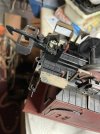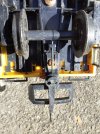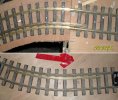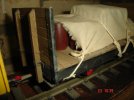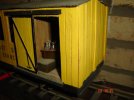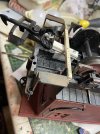using sharp curves on my indoor-layouts, i am "fighting" with these coupler problems for decades.
there are complete different problems for two-axle and for four-axle cars.
to advance my "best" ugly solution for both: link and pin couplers that swivel widely.
two-axle cars - fixed couplers tend to draw cars into the inside of curves. but they are better at pushing cars.
couplers fixed to "turning" axles (LGB style) are better to tow, but bad for pushing cars. (there exists a fix with a diagonal rod)
best solutions would be one-piece tow-bars, that are fixed on the underside of the cars. as near to the axle as possible. (but then one can forget coupling and uncoupling during sessions)
four-axle cars - body-mounted (fix) couplers tend to draw cars to derail to the inside.
truck-mounted couplers have a problem coming out of sharp curves onto straights.
the trailing truck of the first car, entering the straight, pushes its coupler to the outside, while the leading truck of the second car points its coupler more to the inside. - resulting in most/many of the leading trucks derailing to the outside at the end of the curve.
sollutions, i found: either putting a rerailer on the first straight after a curve, or putting guard rails on end of the inside of the curve. like this:
View attachment 340863
(if pushing, derailing occur entering a curve. only that the leading truck of the following car pushes the trailing truck of the car in front of it to the outside)
again the safest way would be one-piece tow-bars, that are fixed on the underside of the cars.
to combine tow-bars with uncoupling, link and pin is the best solution, i found.
View attachment 340864
but... forget pushing! the two bars simply shear out, (similar to LGB one foot long two-axle cars) and the carbodies get in contact.
aaand, one needs to build some guards (wire) that uncoupled bars don't hang too low, or coupled bars don't shear out too much to the sides.
View attachment 340865
disclaimer:
being a roundy-rounder, the question of easy coupling and uncoupling does interest me not so much.
